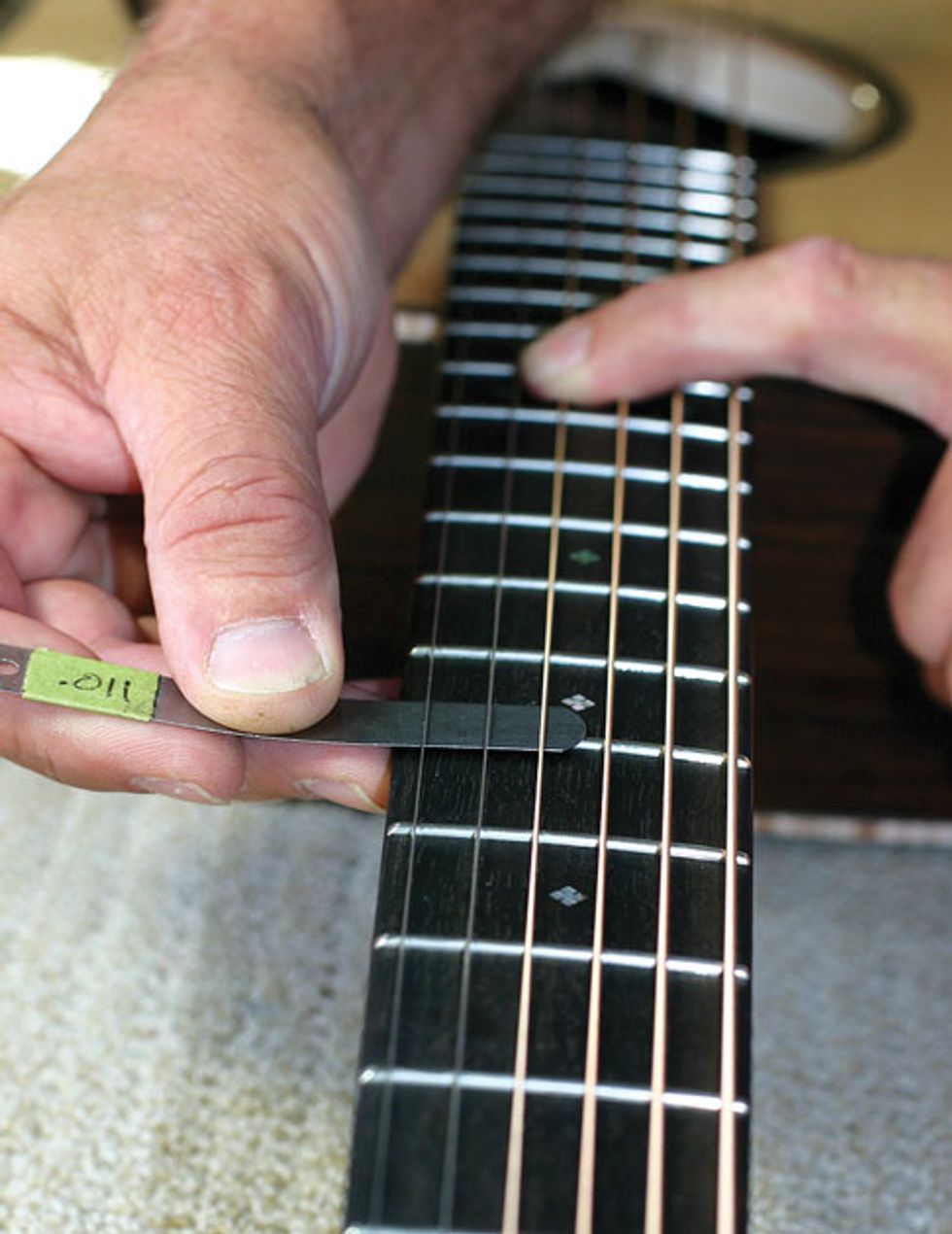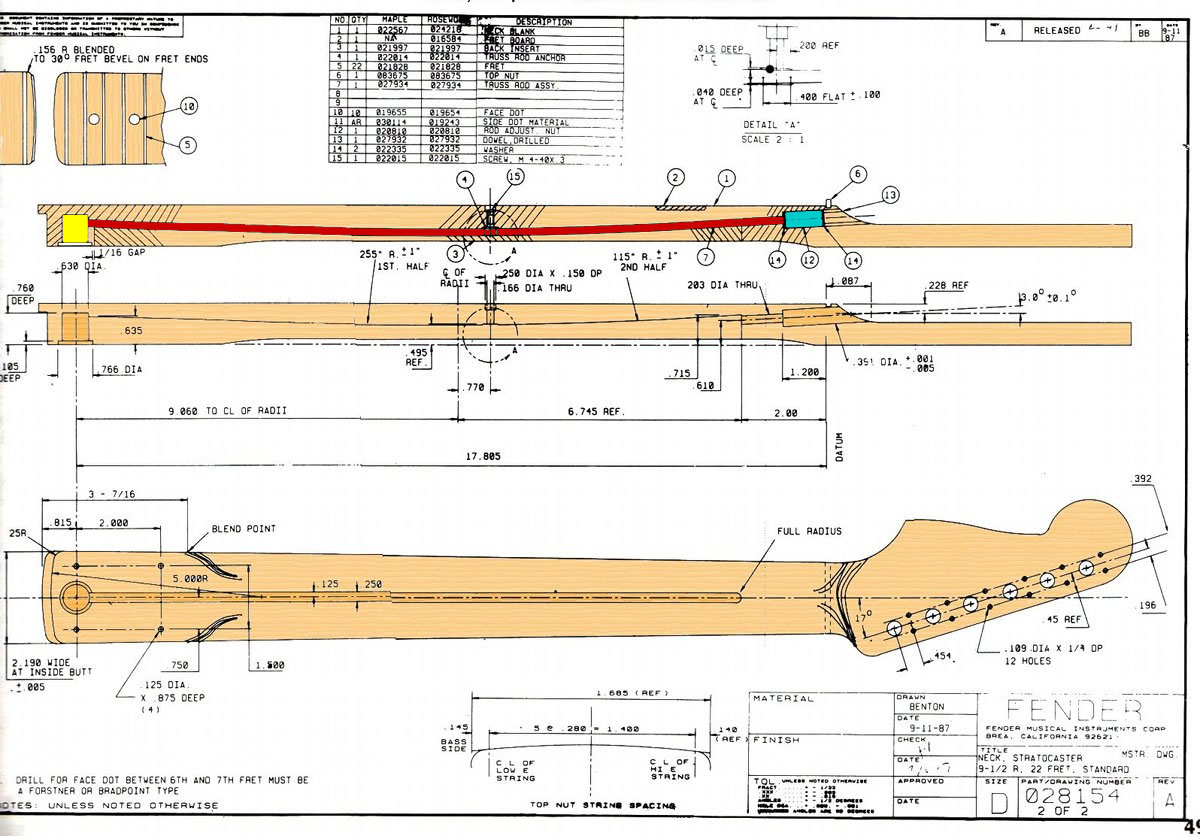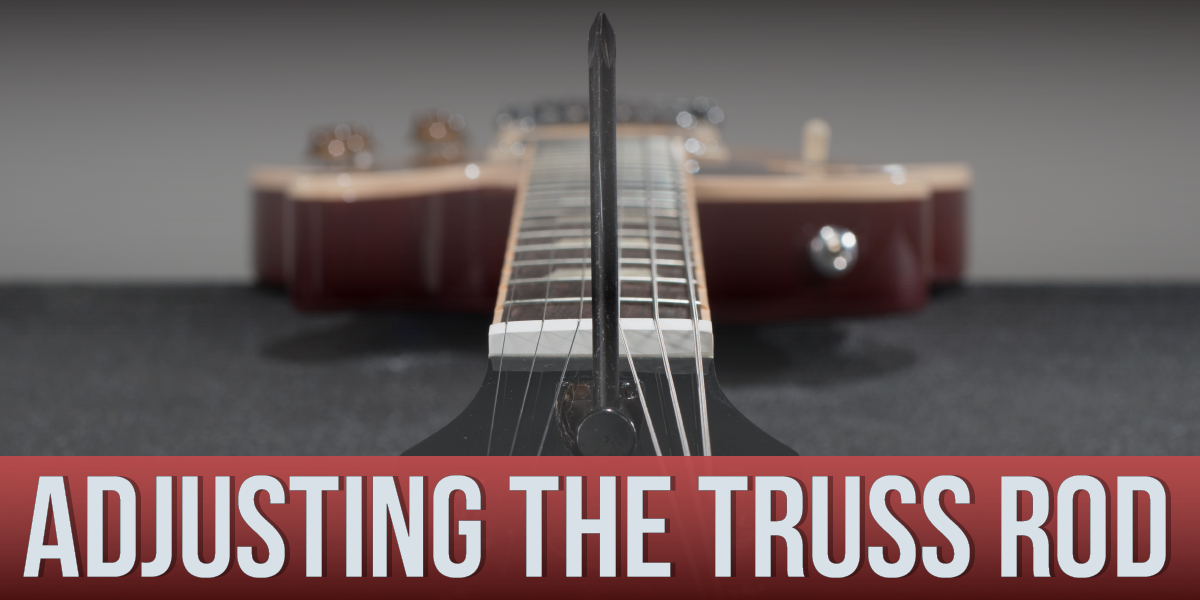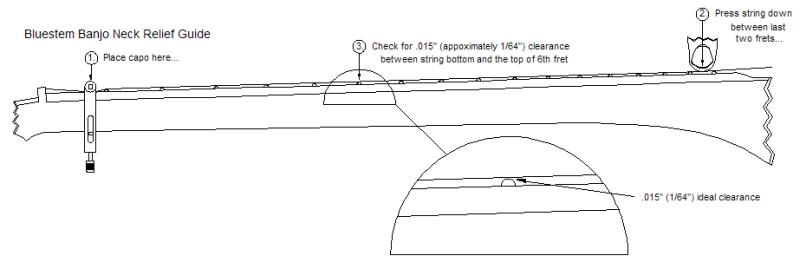Measure Neck Relief Guitar

So you would fret the string on fret 1 and fret 13 for a 12 fretter i think.
Measure neck relief guitar. Place a capo on top of the 1st fret fig. On a typical acoustic guitar that will be from the first fret to the fret at or just past the body joint. A guitar neck is typically not perfectly straight but has a dip about mid way this is relief. Most quality guitar manufacturers supply the correct tool for adjusting neck.
Here is my process for measuring existing neck relief. Tune the guitar to pitch. If you use a straightedge longer than the neck you re no longer measuring relief. If you have two capos that s even better as you can keep both hands free.
Relief is the curvature of the neck. Checking relief with a straightedge. The largest gap is usually towards the center of the neck. Fretting at the 13th fret means the string rests on the top of the 12th fret bob.
The fretboard extension should not be included for the purpose of measuring or adjusting relief. A simple routine measurement you can perform yourself on your guitar or bass is the amount of neck relief which is the amount of curvature along the length of the neck. At that point you ll need to adjust the truss rod. To measure neck relief you ll need a feeler gauge and a capo.
Someone correct me if i m wrong but i believe you want to measure relief between the first fret and the fret at which the body of the guitar joins the neck. Hold down the 6th string at the last fret. Adjusting your guitar s neck relief the amount of bow and resistance in the neck may sound like a scary proposition to the first timer but this task is something you can definitely do yourself if you take it slow and work in very small increments. To measure relief clamp a capo on top of the 1st fret and then hold down the 6th string at the last fret.
Relief is calculated with the instrument tuned to pitch so we can measure the bow created by string tension. With a straightedge placed between the d and g strings bow will become apparent. Place a capo on the first fret then use your finger to fret the e string uppermost string closest to where the neck deepens to join the body. If you measure no relief the neck may be convex.
I measure it by putting a capo on the 1 st fret holding down the string on the fret where the neck meets the body thus creating a straightedge with the string and measuring the gap between the bottom of the low e and the 7 th fret.

















